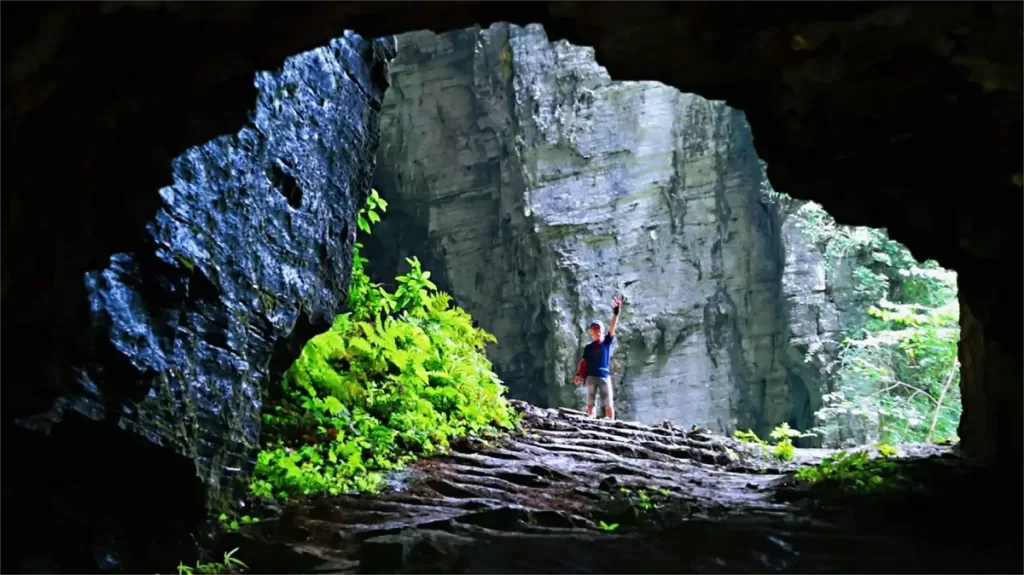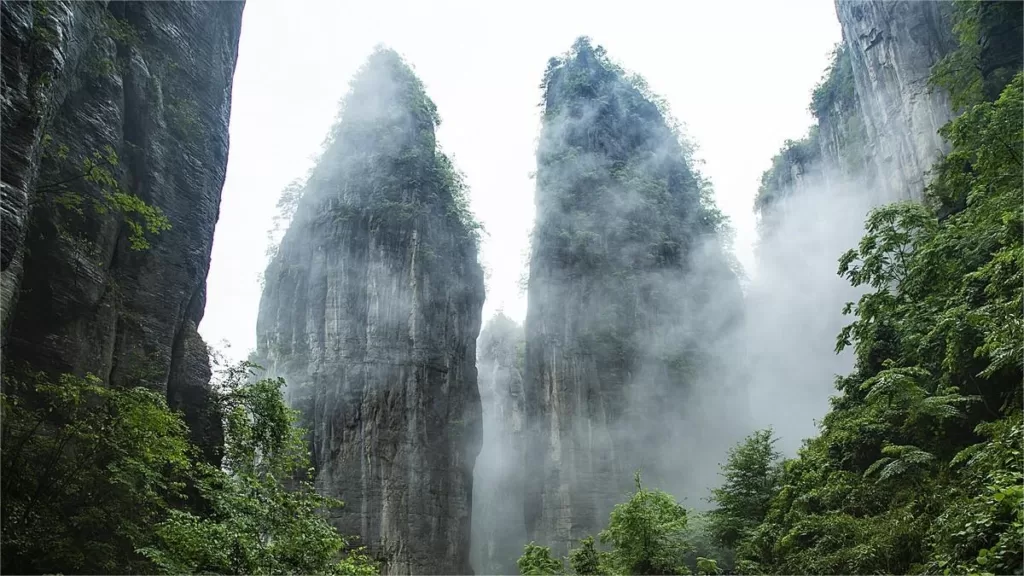Nestled in Enshi Tujia and Miao Autonomous Prefecture, in the city of Lichuan, lies the enchanting Qingjiang Ancient Riverbed (清江古河床), a testament to the ever-changing course of nature and the historical evolution of the mighty Yangtze River. With a total length of 8 kilometers, this ancient riverbed was formed as a result of the redirection of the Qingjiang River before the formation of the Three Gorges Rift Valley.
Before the iconic Three Gorges took shape, and while the rift valley was still in the process of formation, the Qingjiang Ancient Riverbed stood as the main channel of the Yangtze River. Today, this serene landscape, spanning ten square kilometers, remains untouched and is awaiting full accessibility. Its breathtaking scenery, comprising towering cliffs, waterfalls, solitary peaks, pristine forests, and ancient villages, makes it one of the most picturesque outdoor hiking routes in Lichuan.
Hiking Trails

The natural attractions within the area include One-Line Sky, Panda Cave, Big and Small Dragon Gates, Exclusive Village, Cave Groups, Dark River, Fissures, Solitary Peak, Elephant Nose Mountain, and Qingjiang River Gallery. Among these, the interconnected caves, underground rivers, and towering limestone formations create a mesmerizing landscape. The geological structure of the ancient riverbed showcases a comprehensive karst topography, featuring intricate formations and numerous collapsed boulders along the route.
Commencing the journey from the Jingzhao Mountain Village along the ancient riverbed, the first 300 meters lead to a canyon. Peering down, one witnesses winding blue stone steps disappearing into the depths of the lush forest. The valley floor, nestled among green trees, remains concealed, creating an illusion of profound depth. The distant sound of rustling leaves and the moist, slippery moss on the dew-covered grass add to the sensory experience.
Only from the dry riverbed does the true Qingjiang Ancient Riverbed reveal itself. This section of the riverbed is the most picturesque, adorned with layers of moss-covered stone slabs and rippling layers of rocks shaped by flowing water. Although the path is relatively easy to traverse, it becomes a thrilling and experiential journey as it involves navigating through caves and climbing massive rocks.
Important Considerations

Weather Caution:
Always consult local guides about the feasibility of the journey, especially in adverse weather conditions. It is advisable to avoid rainy days when undertaking the hike. Never venture forth in unfamiliar terrain with poor weather conditions and no mobile signal.
Guided Exploration:
Newcomers and regular tourists are encouraged to join organized tours or hire local guides. This precaution ensures a safer experience, particularly in areas with no mobile signal. Follow designated hiking trails or markers left by outdoor groups, and refrain from entering caves without proper guidance.
Partial Route Recommendation:
Considering the physical demands, lack of distinct scenery in later sections, and potential hazards like hidden rivers, it is not recommended to cover the entire Qingjiang Ancient Riverbed route. Choose a suitable segment for exploration.
Safety Gear:
For those venturing into caves and sinkholes, carry appropriate lighting equipment. It is advisable to bring trekking poles, knee protection, and wear loose-fitting clothing. In summer, be prepared for water accumulation in caves, and it is recommended to wear two pairs of shoes for slippery riverbeds during rainy weather.





